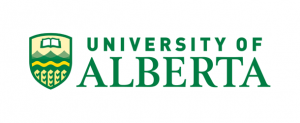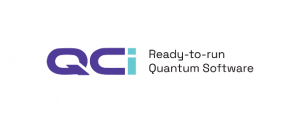Quantum News Brief April 21: SEEQC & Federico II University of Naples announce partnership; Quantum entanglement could make accelerometers and dark matter sensors more accurate; Canada’s ARAQNE (Alliance for Research and Applications of Quantum Network Entanglement) at University of Alberta + MORE
By
Sandra Helsel posted 21 Apr 2023
Quantum News Brief April 21: SEEQC & Federico II University of Naples announce partnership; Quantum entanglement could make accelerometers and dark matter sensors more accurate; Canada’s ARAQNE (Alliance for Research and Applications of Quantum Network Entanglement) at University of Alberta + MORE.
SEEQC & Federico II University of Naples announce partnership
 The first Italian quantum computer is in Naples, thanks to the partnership between the Federico II University of Naples and the international company SEEQC. Quantum News Briefs the April 20 announcement.
The first Italian quantum computer is in Naples, thanks to the partnership between the Federico II University of Naples and the international company SEEQC. Quantum News Briefs the April 20 announcement.
Francesco Tafuri, professor of Physics of Matter at the “Ettore Pancini” Physics Department of the Federico II University explained, “It will be unique in Italy and one of the few in Europe. The physics behind it is exciting and magnificent. The idea is to make it usable also for businesses and other fields of physics”.
Gennaro Miele, director of the Physics Department of the Federico II University,explained, “We will host in our University a piece of equipment, the quantum computer, which is of a particular type. We start with a prototype that will then develop over the years. The interesting thing is that the technology on which it is based was developed here in Naples. Never as in this case has our city been the protagonist of scientific and research activity on a subject that is currently on the cutting edge. Not only in Europe and Italy, but all over the world”.
SEEQC is about to launch the first platform of quantum computing. The two organizations have been collaborating for several years, through a joint laboratory, to make the Campania region a protagonist in an area dominated by the global giants IBM, Google, Microsoft, Intel. In addition to research such as those of MIT and Harvard in the United States.
Marco Arzeo, Lab Manager at SEEQC-EU, explained, “Our company’s ultimate goal is to create a quantum computing platform that we call full stack, i.e. complete. it ranges from hardware to firmware to the end-user cloud interface. There was a strong vision on the part of Frederick II to have an industrial approach on quantum computing in Naples. We must not think of this computer as smaller and faster but as a completely new and revolutionary paradigm of computing.” Click here to read the complete Breaking Local News article.
Quantum entanglement could make accelerometers and dark matter sensors more accurate

Quantum entanglement radically improves the precision of sensors that can be used to navigate without GPS, according to a new study in Nature Photonicsk cited by University of Michigan. Quantum News Briefs summarizes.
“By exploiting entanglement, we improve both measurement sensitivity and how quickly we can make the measurement,” said Zheshen Zhang, associate professor of electrical and computer engineering at the University of Michigan and co-corresponding author of the study. The experiments were done at the University of Arizona, where Zhang was working at the time.
Quantum entanglement could make optomechanical sensors more accurate than inertial sensors currently in use. It could also enable optomechanical sensors to look for very subtle forces, such as identifying the presence of dark matter. Dark matter is invisible matter believed to account for five times more of the mass in the universe than what we can sense with light. It would tug on the sensor with gravitational force.
To enable high accuracy in miniaturized optomechanical sensors, Zhang’s team explored quantum entanglement. Rather than splitting the light once so that it bounced off a sensor and a mirror, they split each beam a second time so that the light bounced off two sensors and two mirrors. Dalziel Wilson, an assistant professor of optical sciences at the University of Arizona, along with his doctoral students Aman Agrawal and Christian Pluchar, built the membrane devices.
Doubling the sensors improves the accuracy, as the membranes should be vibrating in sync with each other, but the entanglement adds an extra level of coordination. Zhang’s group created the entanglement by “squeezing” the laser light. In quantum mechanical objects, such as the photons that make up light, there is a fundamental limit on how well the position and momentum of a particle can be known. Because photons are also waves, this translates to the phase of the wave (where it is in its oscillation) and its amplitude (how much energy it carries).
The team’s next steps are to miniaturize the system. Already, they can put a squeezed-light source on a chip that is just half a centimeter to a side. They expect to have a prototype chip with the squeezed-light source, beam splitters, waveguides and inertial sensors within a year or two. Click here to read complete coverage on University of Michigan news site.
Canada’s ARAQNE (Alliance for Research and Applications of Quantum Network Entanglement) at University of Alberta
 A University of Alberta researcher leading a new Canadian collaboration aimed at bringing next-generation quantum computer networks from the lab into real life.
A University of Alberta researcher leading a new Canadian collaboration aimed at bringing next-generation quantum computer networks from the lab into real life.
“We’re starting to get into the realm of needing to work together because we can’t be experts in all the different pieces,” says Lindsay LeBlanc, associate professor in the Department of Physics and Canada Research Chair in Ultracold Gases for Quantum Simulation.
LeBlanc is leading a project titled ARAQNE (Alliance for Research and Applications of Quantum Network Entanglement), which received $5 million in funding over five years through an NSERC Alliance Consortia Quantum grant announced this week.
“The goal of what we’re doing is to develop quantum networking technologies — both fundamental research and some very practical applications of it,” says LeBlanc.
ARAQNE’s name was inspired by the Greek mythological figure Arachne, a weaver who was transformed into a web-spinning spider. The name couldn’t be more appropriate — the researchers behind ARAQNE are looking to answer questions about how information nodes can connect and be woven together over long distances, and how to effectively send information and link quantum computers.
LeBlanc’s lab also focuses on quantum memory, which is an essential part of the communications component of the ARAQNE project. Quantum memory serves the same purpose as a hard drive does in a regular computer, except rather than storing information in binary, on-or-off states, it stores information in a quantum state. To successfully interact, these pieces of quantum information often have to combine at particular times and in particular ways.
One of ARAQNE’s partners is TELUS, which is helping the researchers bring the science from the lab to the real world of telecommunications. “They’re interested in quantum communications, and part of their contribution is to actually give us time on real fibre to try these things out in real circumstances.”
Other partners include the City of Calgary and two small startups in the quantum space. LeBlanc’s research collaborators on the grant are physics professor John Davis along with researchers from the University of Calgary, University of Ottawa, Simon Fraser University, University of Toronto and University of Waterloo.
The federal government has invested more than $1 billion in quantum research and science since 2009, and in Budget 2021, committed $360 million to support the National Quantum Strategy. Click here to read article in-entirety on U of Alberta’s website.
Quantum Computing Inc to launch reprogrammable and non-repeatable quantum random number generator
 Quantum Computing Inc. announced the expansion of its commercially available product line to include patented Quantum Random Number Generator (“QRNG”) technology, capable of generating non-repeatable number sequences on April 20. Quantum News Briefs summarizes below.
Quantum Computing Inc. announced the expansion of its commercially available product line to include patented Quantum Random Number Generator (“QRNG”) technology, capable of generating non-repeatable number sequences on April 20. Quantum News Briefs summarizes below.
This series of quantum products generate truly random numbers of various probability densities and correlation properties to serve many different applications encompassing security, modeling, and finance. The series includes quantum random numbers (QRNs) that are either binary or high-dimensional, and either independent of, or correlated with each other. Distinctly, customers can configure the QRNG to obey either a uniform probability distribution or a specific non-uniform probability distribution appropriate for their specific application, such as Gaussian, Lorentzian, or other distributions that are important for data simulation and analysis. The Company plans to offer the first series of QRNG products through a cloud-based subscription on its website beginning today followed by an option to purchase the hardware, which is a handheld cube-sized QRNG device, during mid-year 2023.ght2a5b” contenteditable=”false”>QCI launches random number generator.
The patent, developed by QCI’s scientists in partnership with and exclusively licensed from Stevens Institute of Technology, is a broad use patent on a fundamental methodology and implementation that utilizes a unique circuit design that eliminates the need for randomness extraction or amplification, as routinely required by other approaches and devices. This technology is crucial to mitigate security vulnerabilities and provide customers with trustworthy data.
“This breakthrough capability based on measuring the stochastic arrival time of single or correlated photons produces truly random numbers that passed all standard randomness tests such as NIST and Dieharder. Importantly, results are obtained with superior fidelity, accuracy, and cost savings without security compromise,” commented William McGann Ph.D., Quantum Computing Inc.’s Chief Operating and Technology Officer. “Random numbers are fundamental and useful resources in science and engineering with indispensable applications in simulation, machine learning, and cyber-security for use in gaming, military, communications, financial industries and expanding into automotive and Internet-of-things.” Click here to read complete April 20 news announcement.
Sandra K. Helsel, Ph.D. has been researching and reporting on frontier technologies since 1990. She has her Ph.D. from the University of Arizona.
 Quantum Computing Inc. announced the expansion of its commercially available product line to include patented Quantum Random Number Generator (“QRNG”) technology, capable of generating non-repeatable number sequences on April 20. Quantum News Briefs summarizes below.
Quantum Computing Inc. announced the expansion of its commercially available product line to include patented Quantum Random Number Generator (“QRNG”) technology, capable of generating non-repeatable number sequences on April 20. Quantum News Briefs summarizes below.







 The first Italian quantum computer is in Naples, thanks to the partnership between the Federico II University of Naples and the international company SEEQC. Quantum News Briefs the April 20 announcement.
The first Italian quantum computer is in Naples, thanks to the partnership between the Federico II University of Naples and the international company SEEQC. Quantum News Briefs the April 20 announcement.
 A University of Alberta researcher leading a new Canadian collaboration aimed at bringing next-generation quantum computer networks from the lab into real life.
A University of Alberta researcher leading a new Canadian collaboration aimed at bringing next-generation quantum computer networks from the lab into real life.













